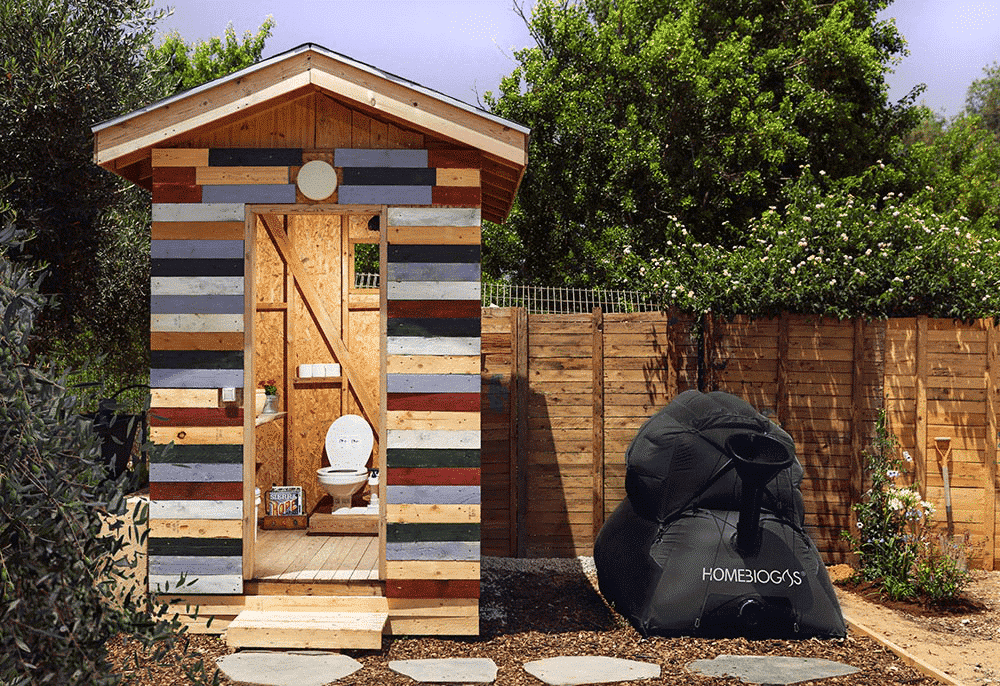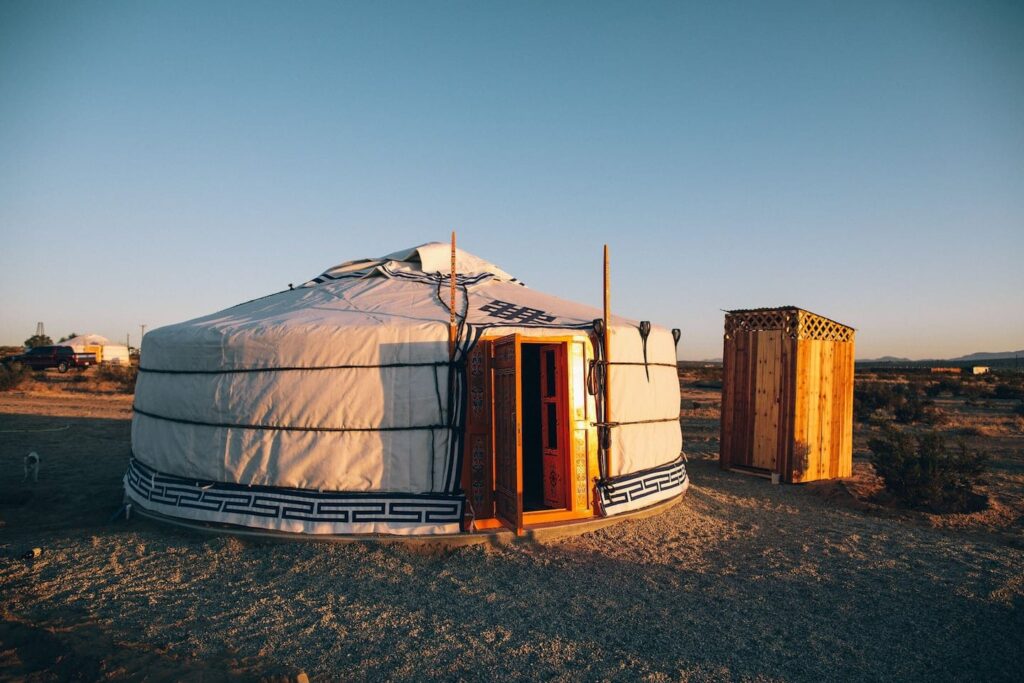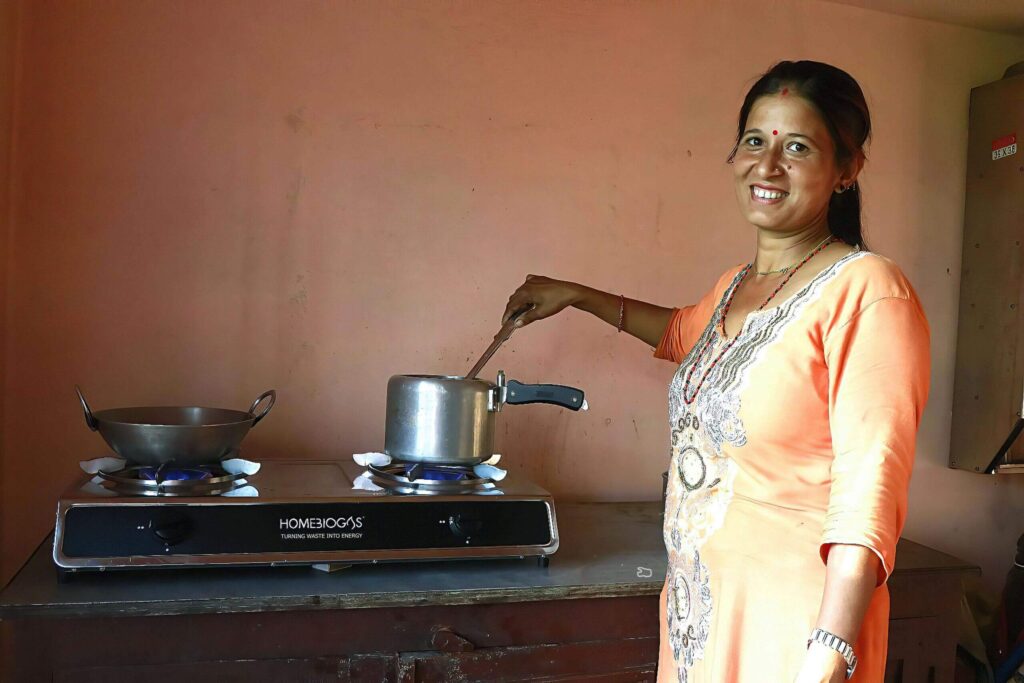
What is a glamping toilet?
A glamping toilet is a luxury toilet designed for camping settings — which is mostly a regular toilet, like the one you use at home; it becomes a luxury because you get the comfort you have at home when camping.
How’s that possible? Despite being an outdoor camping toilet, it can include non-traditional features, such as flushing capabilities, modern waste management solutions, running water, or electricity.
Camping sites that invest in glamping toilets provide high-standard sanitary facilities for a more comfortable and convenient bathroom experience for campers. With a direct impact on the user experience, glamping toilets will influence the camping site’s number of visitors and, consequently, its revenue.
The numbers show why these systems are so important. The glamping industry is experiencing rapid growth — its market size is expected to reach $10.6 billion by 2032, thanks to increased interest in outdoor activities and unique experiences. The North American region is predicted to have the highest growth in the glamping industry, with many new businesses and resorts popping up to meet the demand.
As the industry becomes more competitive, eco-friendly, glamping toilets will become one of the high-end amenities most likely to attract customers.

What kinds of toilets are used in the glamping tents?
Not all glamping tents are made equal. Depending on your budget, the type of tent, the location, and the level of luxury you aim for, you can choose from various types of toilets. The existing infrastructure and local regulations can also influence what toilet system you can use.
Some glamping resorts will use flush toilets. They’re comfortable and familiar to most people but can only be installed where infrastructure permits because they require running water and sewage.

HomeBiogas Bio-toilet
Designed for the next generation of green innovation.
On the other hand, dry toilets are more sustainable and environmentally friendly for glamping sites than flush toilets. They use less water and generate less waste, conserving water resources in areas where water is limited and reducing the need for waste disposal.
And that’s important for travelers — as much as 87% of tourists are interested in sustainable traveling, and 33% want to feel good about their accommodation choices.
Here are some of the most common dry toilets for glamping sites:
- Composting toilets. They’re the most common because they’re affordable, eco-friendly, and easy to install and use. These systems use natural processes for waste management and require minimal water usage.
- Chemical toilets. These systems use chemical substances (formaldehyde, chlorine) to break down waste. They’re easy to maintain, but not all of them are eco-friendly.
- Portable toilets. Appreciated for their convenience and simplicity, they’re easy to set up, clean, and move around. However, they can create odors and require frequent emptying and maintenance.
- Incinerating toilets. These toilets use heat to incinerate waste and kill pathogens, producing little to no waste. The downside is that they are relatively expensive and require electricity.
How does a camping composting toilet work?
Most camping composting toilets rely on aerobic digestion for waste management. Such a system collects the liquid in a separate container. At the same time, the solid waste is deposited into a composting chamber where bacteria break it down and turn it into compost.
A camping composting toilet will likely require a carbon-rich material to speed up decomposition — such as sawdust, peat moss, or coconut coir. Many glamping composting toilets will also include a built-in fan or vent that help circulate air and keeps odors to a minimum.
The process of composting in a glamping toilet can take between 4 and 6 weeks. The result is a clean, odorless, and safe compost that you can use to fertilize gardens or other outdoor spaces.
Alternatively, you can opt for a glamping toilet that uses anaerobic digestion for waste management. This way, you ensure a seamless toilet experience while recycling the waste to create biogas and enrich the camping site with a renewable power source for heating and cooking.

What about portable solutions?
A portable toilet for glamping usually includes the following:
- A toilet bowl.
- A holding tank (some models use disposable waste bags, while others have built-in tanks that require regular emptying).
- A flushing mechanism (a manual flush handle, a foot pedal, or an automatic flush).
To power a portable toilet for glamping, you can use batteries, electricity, or hand pumping, depending on the model. The system is usually seen as a hygienic option for people who want to experience the great outdoors without sacrificing the comforts of home.
Glamping Toilets: benefits of comfortable camping experience
- You get to impress guests with convenient and comfortable solutions. Glamping toilets provide access to a clean, odorless toilet close to a guest’s cabin or tent for a great glamping experience.
- These toilets maintain a high level of hygiene, being easy to use and maintain. You can easily clean and sanitize them regularly to eliminate germs and unpleasant odors.
- Most glamping toilets are designed to be eco-friendly and sustainable to reduce your glamping site’s carbon footprint and meet your customers’ expectations of an outdoor, healthy experience.
- Most glamping toilets are cost-effective. While the upfront installment expense may seem high, the systems have minimum infrastructure requirements and low maintenance costs.
What glamping places offer glamping toilets/bathrooms for travelers?
Morii is a vintage-inspired geodesic dome located at over 1000 feet with views of the surrounding area. It has a private plunge pool, a fire pit for cooking and dining, and modern amenities such as air conditioning and a bathroom with shower, vanity, and eco-friendly composting toilet.
The glamping site is located in Marble Falls (TX).
28 Palms Ranch | Twentynine Palms
One of the highlights of 28 palms ranch, a desert yurt retreat, is their innovative approach to sustainability and clean living. 6 yurt on the property are equipped with a HomeBiogas flushing Bio-toilet, providing guests with a convenient and efficient way to produce clean energy.
It’s located in Twentynine Palms in California .
This glamping resort has Grand Tents with private bathrooms, historically accurate Conestoga Wagons, and Traditional Family Tents. All guests have access to private bathrooms and shower rooms.
The resort is located along the shores of Bear Lake, outside Garden City (UT).
All accommodation types have comfortable bathrooms with full-flush toilets. A private walkway connects each Summit Tent to its custom-designed bathroom, while Journey Tents have nearby shared bathrooms within walking distance. Guests who opt for Outlook Shelters get access to a full en suite bathroom.
The company has locations in Vail (CO), Hill Country and Fredericksburg (TX), Big Sky (MT), Green Mountains (VT), and Sonoma (CA).
The HomeBiogas solution for your comfy glamping
The HomeBiogas bio-toilet kits can support glamping sites with a superior alternative to traditional outdoor toilets. They’re a clean, eco-friendly waste management solution and sustainable energy source.
All HomeBiogas systems use organic waste materials to generate biogas that can be used for cooking. The biogas is produced through anaerobic digestion — bacteria break down the human waste inside a sealed environment and produce methane-rich biogas.
Using HomeBiogas bio-toilet kits makes it easy for a glamping site to reduce its dependence on fossil fuels, lower greenhouse gas emissions, and provide a renewable energy source for guests.

What travelers say about glamping tents with a toilet or a restroom
Most guests will appreciate tents that include a toilet or a restroom. So, rest assured that the added comfort and convenience of having a private bathroom in their tent makes any glamping site more appealing.
Think of the privacy and comfort of having a private toilet or restroom inside the glamping tent or yurt. Many online reviews talk about how this detail enhances their overall experience. People can finally immerse themselves in the natural surroundings without sacrificing indoor conveniences. This is particularly helpful for families with young children or elderly travelers who may have difficulty accessing public restrooms.
Glamping tents with toilets inside meet the level of luxury people want, making your glamping site an excellent destination for travelers. Moreover, by adding features like hot water, heated floors, and showers, you upscale the experience. These essential improvements will get your glamping site closer to what a traditional hotel or resort provides and align your offerings with the 2023 trends and expectations.
Final Thoughts
Biogas or Bio-toilets are the smart choice for the glamping sites of the future. Not only are they more environmentally friendly and sustainable, but they also provide guests with a comfortable and convenient camping experience.
With Bio-toilets, glamping sites can lower their water usage, lower waste disposal costs, and provide guests with a unique, eco-friendly experience that sets them apart from traditional camping sites.







